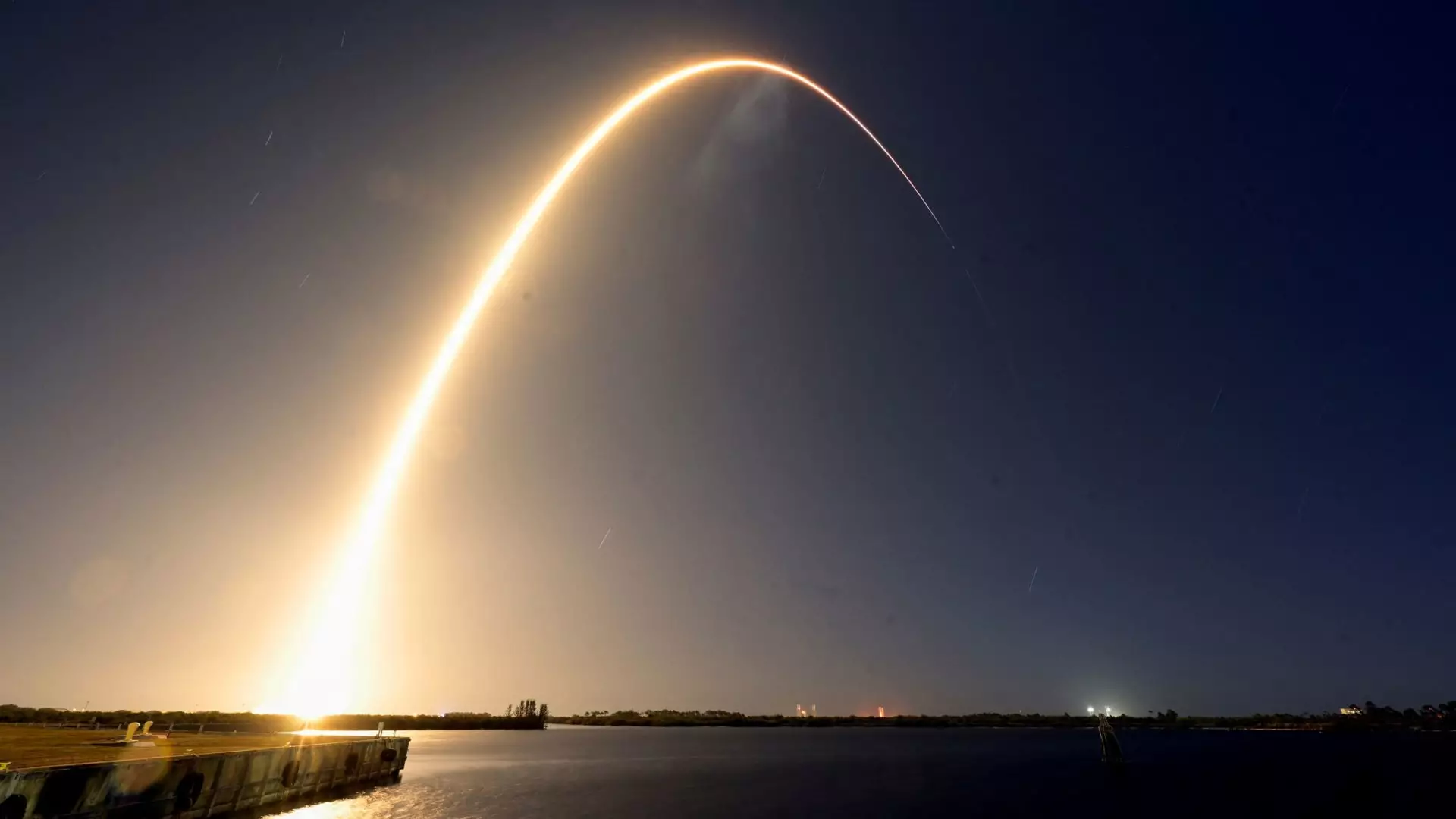Firefly Aerospace, a Texas-based aerospace manufacturer specializing in rockets and spacecraft, has taken bold strides toward lunar exploration. Their latest venture, the “Blue Ghost” cargo lander, embarked on a groundbreaking mission from Florida aboard a SpaceX Falcon 9 rocket. This mission is particularly significant as it marks Firefly’s entry into the burgeoning market for lunar services framework established by NASA. With aspirations to return humans to the Moon, the success of such missions may play an instrumental role in our future ventures into deeper space.
The Blue Ghost lander, named after an elusive firefly species indigenous to the United States, stands at about 7 feet tall and is designed to transport 10 payloads from both governmental and commercial sectors. Under a NASA contract valued at $101 million, this mission is part of the agency’s Commercial Lunar Payload Services (CLPS) initiative, emphasizing the seamless delivery of scientific projects and various cargoes to the Moon. As such, Firefly is not just launching a spacecraft; it is pioneering a pathway that could significantly ease future lunar exploration endeavors.
Firefly’s CEO, Jason Kim, articulated the company’s determination post-launch, emphasizing their full commitment to executing the mission objectives. The path to lunar exploration is fraught with challenges, yet the successful deployment of the Blue Ghost represents the initial phases of a carefully mapped-out journey to the Moon.
Interestingly, Firefly’s mission comes amidst a backdrop of mixed successes within the lunar delivery arena. Competing companies such as Astrobotic and Intuitive Machines attempted their missions in the past year, with results varying from mishaps to successful albeit rocky landings. These precedents underline the inherent risks and technological hurdles that accompany such pioneering efforts. Even as NASA enthusiastically supports these endeavors, the reality remains that while achieving stability in lunar missions is a priority, success is not guaranteed.
Despite these challenges, Firefly looks to establish a prosperous foothold in the CLPS program by achieving its predefined milestones. To date, the company has successfully hit five of the sixteen objectives outlined for the Blue Ghost mission, from launch to orbital testing. This methodical approach could very well be the key to their success, as they further prepare for key mission stages with an expected lunar touchdown scheduled for March 2.
With the Blue Ghost’s targeted landing zone set within Mare Crisium—a prominent lunar basin on the Moon’s near side—Firefly envisions operating the lander for a complete lunar day, approximately two Earth weeks. A challenge that lies ahead is the operation during the lunar night, which presents a host of climatic and technical challenges unknown to those who have previously attempted lunar landings. Successful navigation through these hurdles could set a precedent for future missions, inspiring confidence among potential partners and stakeholders.
Moreover, the launch was not solely focused on Firefly; it served as a rideshare event for the Japanese lunar venture ispace, which is attempting its second moon mission after its initial failure last year. The collaborative nature of these missions underscores a larger strategy within the space exploration community, where cooperative efforts could significantly bolster capabilities while distributing risks involved in lunar exploration.
The lunar exploration landscape is evolving rapidly, with NASA forecasting that as many as five American companies may undertake lunar landing missions as early as 2025. As private firms like Firefly Aerospace push the boundaries of space exploration, the potential for pioneering research and economic opportunities grows infinitely larger. Each iteration of these missions not only serves as a groundbreaking endeavor but potentially lays the groundwork for a sustained human presence on the Moon and beyond.
Firefly Aerospace’s Blue Ghost mission encapsulates a significant leap forward in lunar exploration with its dual aim of executing deadly precision in payload delivery while paving the way for humanity’s return to the lunar surface. As this venture unfolds, it is poised to inspire future collaborations and technical innovations necessary for the next great chapter in human exploration.

